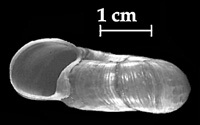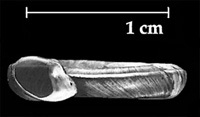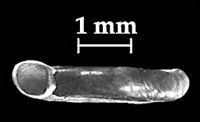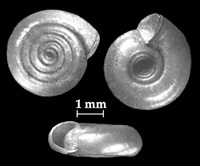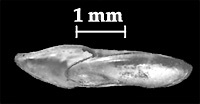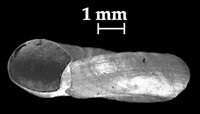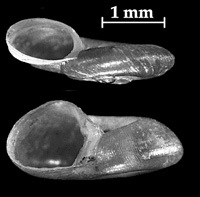All members of this family are sinistral and most have a sunken spire with the shell wound in one plane only, or nearly so. It is therefore difficult to observe the "left-handedness" of the shell. NO members of the family have an operculum in the mouth aperture.
The next part of the key relies heavily on the size of the adult shell and on the number of whorls of the adult, so it is important to measure the shell as accurately as possible and also to count the number of whorls. Take a note of the number of whorls, and of the maximum height and the maximum width in millimeters – you are likely to need to refer to them more than once. Juveniles are difficult to determine without some experience. They are always smaller not only in size but in number of whorls.
For details of how to count whorls click the text link.
Please click on the appropriate image below in order to continue.
Adult shell wider than 20 mm. and height greater than 6 mm. ; comprised of 5 – 6 glossy whorls.
Adult shell wider than 10 mm. and height greater than 2 mm. ; shell distinctly keeled.
Adult shell between 6 – 10 mm. wide and between 1 – 2 mm. in height; with or without a keel.
Adult shell 5 – 6 mm. wide and 2 mm. in height, with 7 – 8 narrow whorls, partially enclosing the preceding whorl.
Adult shell 4 – 7 mm. wide and shaped like a lens.
Adult shell 5 – 7 mm. wide, relatively rounded; dished from below; without an enamel-like gloss.
Adult shell very small, less than 3 mm. in width, and shaped like either of these.

